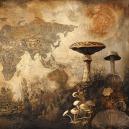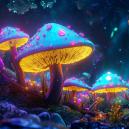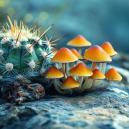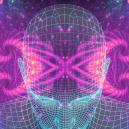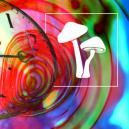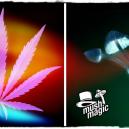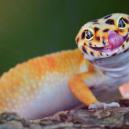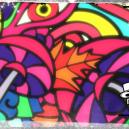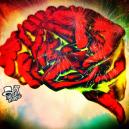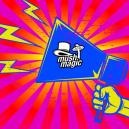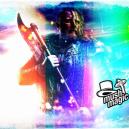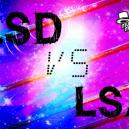Mescaline vs Psilocybine
Published :
June 5th, 2018
Categories :
Research

Mescaline and psilocybin are two naturally occurring psychedelics. The compounds differ in pharmacology, effects, and therapeutic value, but have both been used for hundreds, if not thousands of years.
Psilocybin and mescaline both stand upon the podium of natural psychedelic compounds, alongside other substances such as DMT and ibogaine. Although the psychoactive experiences produced by these chemical constituents may vary, both can induce changes in consciousness that produce profound changes in an individual. And both substances are used for spiritual, medicinal, and recreational reasons.
OCCURRENCE IN NATURE
Mescaline and psilocybin are found within lifeforms in the natural world. Psilocybin can be sourced from a large variety of mushrooms. It’s been discovered that over 180 species contain the psychoactive compound or its derivative psilocin. These mushrooms can be found in many regions of the world, from South America and Europe to Africa and Asia.
Mescaline, on the other hand, is found within numerous species of cacti. These include Peruvian torch (Echinopsis peruviana), San Pedro (Echinopsis pachanoi), and peyote (Lophophora williamsii). All species are native to the United States and Mexico.
TRADITIONAL USE
Psilocybin mushrooms have been a part of culture for many thousands of years, as indicated by archaeological evidence. Mushrooms can be found depicted in prehistoric art across the world in the form of cave paintings. Authors such as Terence McKenna and Graham Hancock have gone so far as to state that psychedelics like psilocybin may have played a fundamental role in human evolution in terms of self-awareness and abstract thought.
Psilocybin mushrooms were used by the native peoples of Mesoamerica for spiritual functions. Statues, stones, and motifs all depicting mushroom imagery have been found in regions of South America. The Aztecs and Mazatecs held the belief that psilocybin mushrooms were divine.
Mescaline has also seen use that spans back into antiquity. Mescaline cacti were used ceremonially by Native American populations in today’s Texas and New Mexico.
PHARMACOLOGY
Psilocybin is metabolised into psilocin when ingested, which is responsible for the psychoactive effects that follow. The compound is known to bind to serotonin receptors within the brain, in particular the 5-HT 2A subtype receptor.
Mescaline also binds to serotonin receptors within the brain, in particular serotonin 1A, 2A, 2B, and 2C receptors. Mescaline is also known to have an affinity for dopamine receptors.
EFFECTS OF PSILOCYBIN
When it comes to psilocybin mushrooms, a moderate active dose is considered to be within the range of 1–2.5g of dried mushroom. The higher end of the spectrum is around 5g of dried mushroom, an amount popularised by Terence McKenna to induce a strong experience, often referred to as a “heroic” dose.
Psilocybin causes a change in perception within the user, resulting in saturated colours, patterns, and visual hallucinations. These effects are believed to be the result of a phenomenon called synesthesia, where colours, smells, and sounds can be perceived as one another by the subconscious mind. For example, a user might be able to smell or hear the colour green.
Effects are usually felt around 1–1.5 hours after ingestion has taken place.
Higher doses of psilocybin mushrooms often result in users experiencing a full-blown psychedelic experience, in which they report feelings of spiritual awakening and even contact with entities.
Users may also sometimes experience what is known as a “bad trip”, where they become overwhelmed by anxiety and feel as though they are losing control. This can usually be remedied with the help of a sober “trip sitter” who calms the person down and helps them return to a more relaxed state.
HYPERCONNECTIVITY
Researchers are investigating how psilocybin achieves some of its effects on the brain. It is now known that psilocybin causes hyperconnectivity by increasing communication between different regions of the brain. Under the effects of psilocybin, the brain seems to link up parts of the brain that were previously unconnected.
Psilocybin is also taken in microdoses. A microdose is considered to be around 0.1–0.2g of dried mushroom. The psychoactive effects of such a small dose are practically non-existent, making microdoses sub-perceptual. The point of microdosing isn’t to trip, however, it is associated with the positive benefits of enhanced mood, increased energy, and boosted creativity.
EFFECTS OF MESCALINE
Mescaline doses can vary depending on the type taken, whether that be mescaline hydrochloride, mescaline sulfate, or mescaline freebase. A strong dose of mescaline hydrochloride is considered to be between 300–500mg. The effects of mescaline start to set in between 45–90 minutes after ingestion, with the experience lasting up to 8 hours.
Mescaline is reported to produce visual hallucinations in the form of patterns, spirals, and mosaics. More potent visuals of animals and people are also said to occur.
Mescaline is known to distort sensations of spatial awareness and touch. Objects can feel much closer or further away than they really are, and hard objects may feel soft and vice versa. Ego dissolution may also take place, where an individual temporarily loses their sense of self and their connection to the physical world.
THERAPEUTIC EFFECTS OF PSILOCYBIN
Psychedelics are starting to shed their controversy and propaganda, displaying therapeutic potential under the scientific method. These findings only confirm what anecdotal accounts have suggested for a very long time; that these compounds have the potential to encourage significant benefits in people's lives.
Psilocybin has shown great promise in the treatment of depression, anxiety, and addiction. Not only this, but the compound may be even more effective than existing conventional treatments.
A paper published in Lancet Psychiatry 2016 documents a study that investigated the effects of psilocybin on treatment-resistant depression.
The trial consisted of 12 patients—6 men and 6 women—who were experiencing moderate-to-severe treatment-resistant depression. There was no control group within the experiment, and all subjects received 2 oral doses of psilocybin, 10mg and 25mg, 7 days apart.
The researchers concluded that subjects displayed marked and sustained improvements in anxiety after the study had been conducted, stating that the compound could play a future role in the treatment of depression.
Another study found that psilocybin helps to mute brain chatter that occurs in regions partly responsible for maintaining one’s sense of self. Researchers believe that overconnectivity in these regions may play a role in negative self-beliefs and self-criticism, factors that can contribute to depression and anxiety.
THERAPEUTIC POTENTIAL OF MESCALINE
Less research has been conducted on the therapeutic potential of mescaline. Mescaline in the form of the peyote cactus is used traditionally within the Native American Church. In this context, the compound has been used to treat cases of alcoholism.
Mescaline has also be used traditionally as an antidepressant, and to alleviate symptoms of headache, fever, sunstroke, and arthritis. As psychedelics continue to receive greater scientific attention, more uses of mescaline may come to light.





